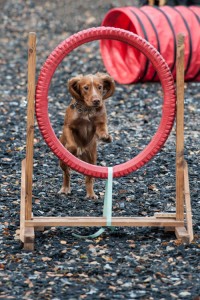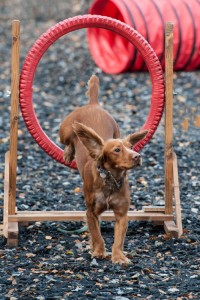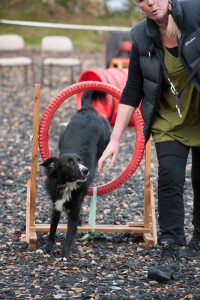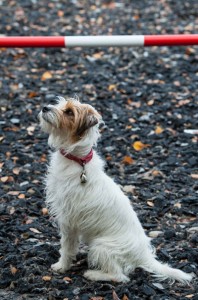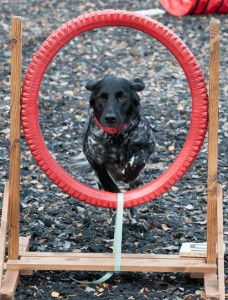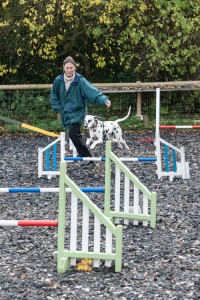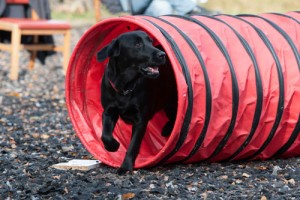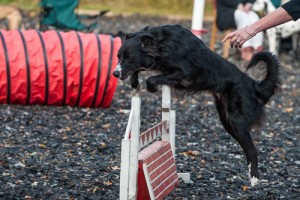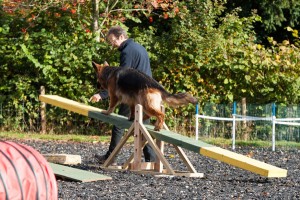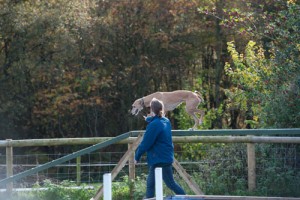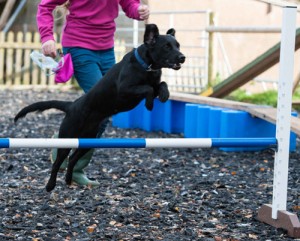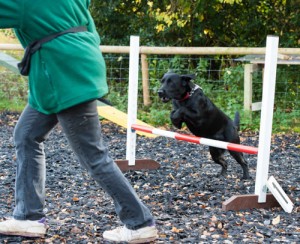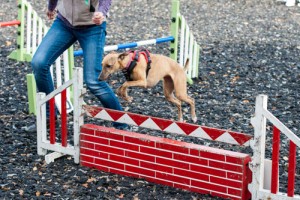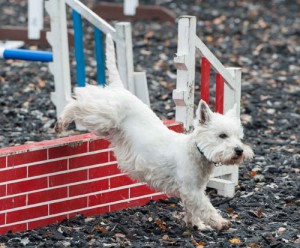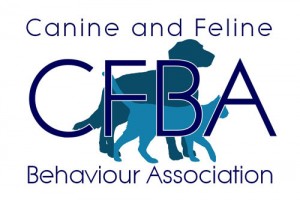Optimum Age for Obtaining A Puppy
Having bred several litters of puppies of two breeds, German Shepherds and Large Munsterlanders, I will firstly relate my personal experiences and opinions on the optimum time to home a puppy. My belief is that it makes no difference what breed the puppy is whether it is a small or large type, their brains develop at a similar rate.
I allow my litters to go to their new homes at 7½ – 8 weeks old, certainly no younger. It is important to be aware of how quickly puppies develop, particularly if you compare their development to the human baby. A dog is a puppy from birth to 8 months then a “teenager” from 8 months to 3 years. Considering a modern dogs lifespan is 12 to 16 years this period of time is crucial in the development of your families’ ideal dog.
There are several critical stages of development;
Birth – 21 days. When born they are helpless blind and deaf. Their mother keeps them clean, feeds them, stimulates them by licking to enable them to poo or wee and keeps them warm. They sleep 90% of the time. During this time huge changes are happening to their nervous system.
At 2 weeks their eyes begin to open, they begin to become mobile, crawling around using their already developed senses of smell and warmth.
.
By 3 weeks they are beginning to see more clearly and their hearing is developing. They are up on their feet, if a little wobbly. Their first teeth are coming through and they begin to wee and poo without stimulation.
4 – 6 Weeks. Puppies become aware of their surroundings, interaction with their littermates increases. They discover through play what behaviour is acceptable. Mum will discipline her babies; sort out squabbles between her pups. This is the beginning of learning how to socialise correctly. They also begin to respond to the human voice, to recognise their breeder. During this period they wonder away from their sleeping area to wee and poo.
Social skills are forming quickly but they do lack self-confidence.
7 – 12 weeks. A puppy’s brain is fully developed but similar to children they have no life experiences to rely on. They must be introduced to external stimuli. To become a good pet, puppies need positive interaction with humans on a daily basis. Exposure to humans is vital. My own puppies also socialise with the rest of my canine family, they come outside meet my poultry, experience different terrain and surroundings. A good breeder exposes the litter to as many different aspects of family life as possible.
I feel it is important to handle the puppies from an early age. They are weighed daily for the first week during a time when their mother is shouldering the lion’s share of raising the puppies. The mother trusts me to do this and is relaxed during this exercise, and then when the puppies senses are developed a little more, this controlled handling is accepted as normal. Nail trimming and worming are also carried out. All of these actions have an effect on the puppy and its attitude toward human beings. They may struggle or cry when older but they soon accept the restraint thus instigating important rules and boundaries providing the correct basis for a happy relationship within the family pack.
Factors to consider before obtaining a puppy greater than 8 weeks old.
If considering homing an older puppy it is vital to take into consideration how the puppy was reared. Puppies’ brains develop quickly so a blue print must be laid down.
A breeder may “run on” one or two puppies which they consider to be a suitable standard for the show ring. When a decision is made which one to keep, one or more of the litter may become available at a later stage. This may not necessarily be a bad thing so long as the puppy has had sufficient input from the breeder.
To prevent a puppy from developing fear or behavioural issues breeders and owners shouldn’t interfere with the puppy’s inbuilt curiosity, they have to make some mistakes and be allowed to develop their own skills for dealing with new challenges, even scary ones. If these important informative weeks have only been in the sheltered facility of a kennel they will not have developed this ability.
If the puppy has been kennelled it will not be house trained. This is an issue that has to be addressed whatever age the puppy. Patience and time are important factors here.
Bad habits may have already formed such as jumping up at fences and barking.
The puppy may have formed a strong bond with its kennel mate. For the first few weeks of life your puppy is programmed to follow its leader. If that leader is another dog rather than a human the puppy will automatically look to other dogs as its leader.
It is worth remembering that if the older puppy has not had enough socialisation with varying groups of people i.e. children, they may be frightened by the excited and noisy behaviour of boisterous young children or an elderly relative walking with a stick or frame.
If the puppy has been kept on its own it may be too independent in nature and therefore difficult to build a bond. The opposite may also be true, extreme attention seeking such as barking, repetitive jumping and whining may indicate a dog capable of building an almost obsessive relationship.
The puppy may struggle when left alone. In their natural environment they have constant companionship in the form of other pack members, this can create issues at night or during the day. They have to be taught to be left for short periods initially. Following a leadership plan and a good exercise and feeding routine appropriate to the puppy’s age is vital.
If fed alongside other dogs the lack of a competitive aspect of eating could affect the puppy’s appetite. It is then tempting to introduce increasingly tasty morsels to tempt the puppy to eat. As long as a quality diet is offered, preferably a natural diet, the puppy will soon eat assuming there are no health issues.
Initial socialisation may be lacking, it is so important to encourage your puppy’s desired behaviours as soon as you bring it home. This is easier at a younger age. There are so many different influences that go into making your dog the perfect family member. The mother will have already given her litter a great start. The litter will have instilled in them the concept of rules and boundaries and will come to you with an understanding of canine social do’s and don’ts. Instinctively, once it enters adolescence its confidence and curiosity grows, it will want to explore and be much more independent. A good breeder will have introduced the puppy into the peculiarities of our human world, furthering its education.
Every action you take, every emotion or signal will be used to formulate the puppy’s opinion of you and what your role will be in its life. So if this period of learning is absent from your puppy due to the way it is kept, for example kennelled with little or the wrong human interaction or with their litter mates only for company, they may have formed a less than ideal view of humans. Socialisation does not mean being so friendly toward people, your puppy also has to learn how to ignore people dogs and other exciting distractions. Remember, not everyone loves dogs!
Modern lives are busy making it tricky to be with our pets 24/7. Dogs as a species are incredibly adaptable, a puppy or young dog can adapt to a new lifestyle if we communicate the correct information. Whatever rules and boundaries we decide on setting have to be enforced from day one consistently by all members of the family. By being clear and consistent about these rules from day one it is perfectly possible to succeed in introducing your puppy into its new pack. It may be that a few undesired behaviours may have to be ironed out. This takes time, effort and skill in communication.
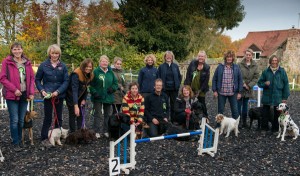 We had our first fun agility competition at the weekend. Lots of doggies and handlers came to have a go at their first round of agility. The weather was kind, perfect for sitting and watching while enjoying tea and cake.
We had our first fun agility competition at the weekend. Lots of doggies and handlers came to have a go at their first round of agility. The weather was kind, perfect for sitting and watching while enjoying tea and cake.
